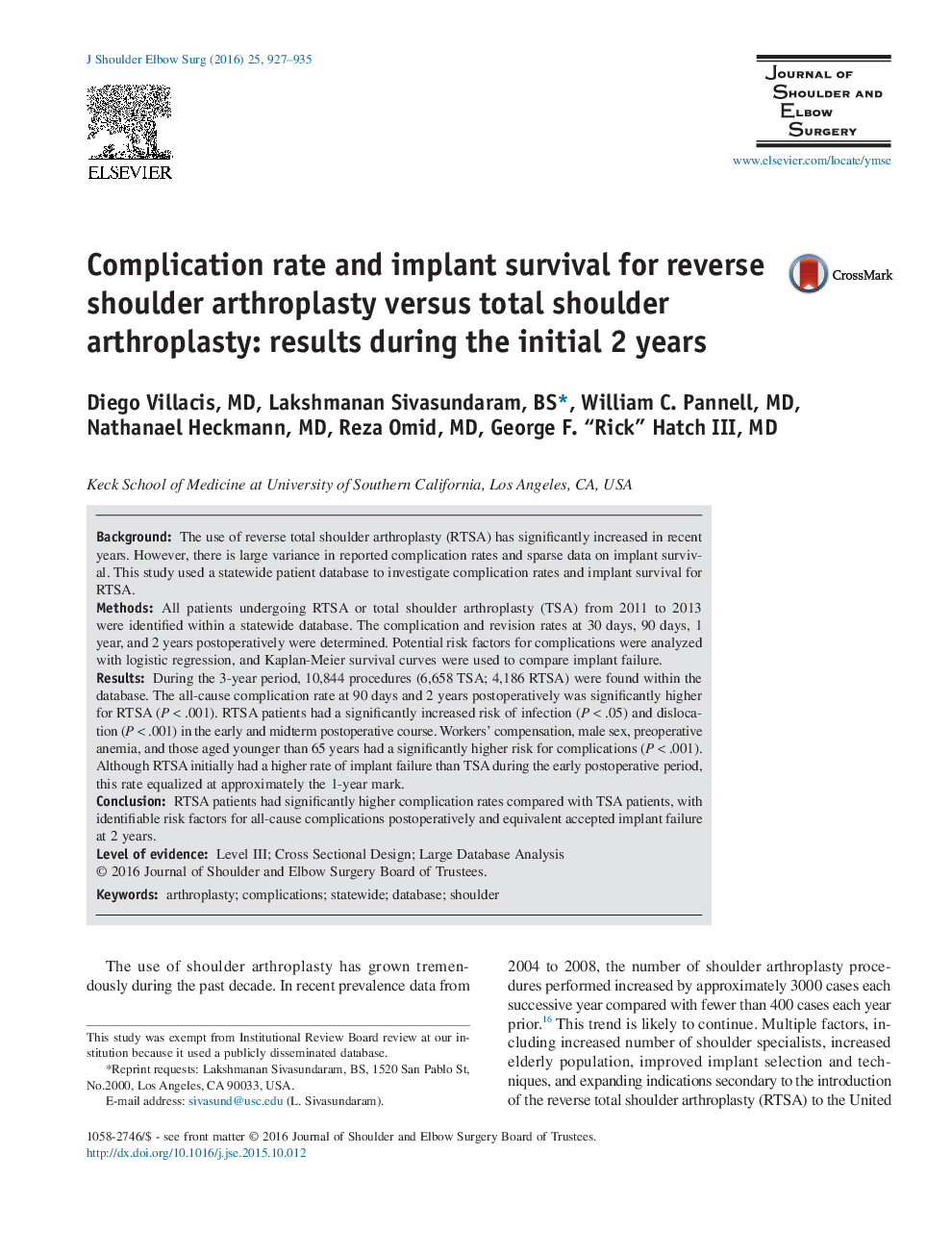| Article ID | Journal | Published Year | Pages | File Type |
|---|---|---|---|---|
| 4072869 | Journal of Shoulder and Elbow Surgery | 2016 | 9 Pages |
BackgroundThe use of reverse total shoulder arthroplasty (RTSA) has significantly increased in recent years. However, there is large variance in reported complication rates and sparse data on implant survival. This study used a statewide patient database to investigate complication rates and implant survival for RTSA.MethodsAll patients undergoing RTSA or total shoulder arthroplasty (TSA) from 2011 to 2013 were identified within a statewide database. The complication and revision rates at 30 days, 90 days, 1 year, and 2 years postoperatively were determined. Potential risk factors for complications were analyzed with logistic regression, and Kaplan-Meier survival curves were used to compare implant failure.ResultsDuring the 3-year period, 10,844 procedures (6,658 TSA; 4,186 RTSA) were found within the database. The all-cause complication rate at 90 days and 2 years postoperatively was significantly higher for RTSA (P < .001). RTSA patients had a significantly increased risk of infection (P < .05) and dislocation (P < .001) in the early and midterm postoperative course. Workers' compensation, male sex, preoperative anemia, and those aged younger than 65 years had a significantly higher risk for complications (P < .001). Although RTSA initially had a higher rate of implant failure than TSA during the early postoperative period, this rate equalized at approximately the 1-year mark.ConclusionRTSA patients had significantly higher complication rates compared with TSA patients, with identifiable risk factors for all-cause complications postoperatively and equivalent accepted implant failure at 2 years.Level of evidenceLevel III; Cross Sectional Design; Large Database Analysis
